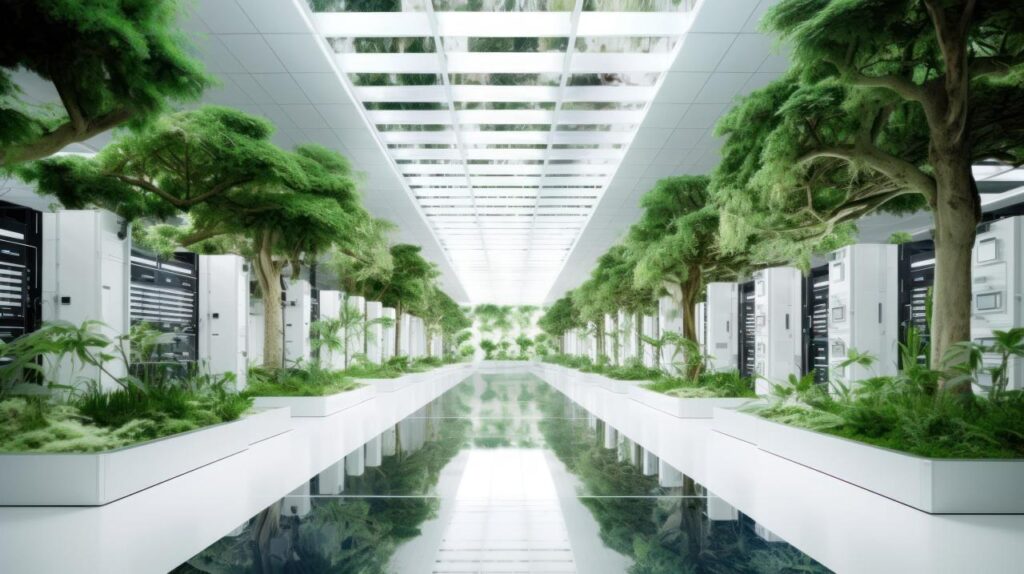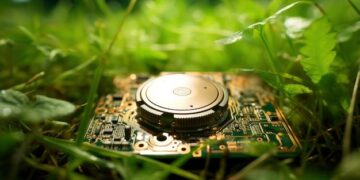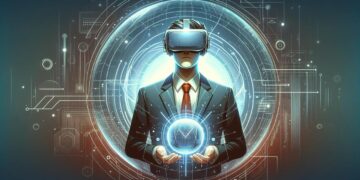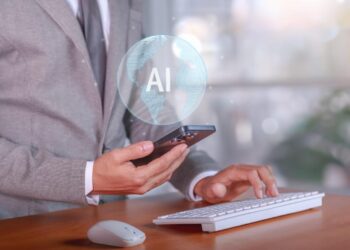The Urgent Need for Green Data Centers
As the digital age surges forward, data centers—the backbone of the internet—are experiencing exponential growth. These massive infrastructures power cloud computing, streaming, online transactions, artificial intelligence, and more. However, this convenience comes with a cost: data centers are among the largest consumers of electricity globally.
With environmental concerns and operational costs escalating, the industry is being forced to innovate. The shift is clear—companies and governments alike are pushing for energy-efficient, sustainable data centers to meet growing digital demands without devastating the planet.
In this in-depth exploration, we’ll uncover how innovations in design, cooling, AI, hardware, and renewable energy are shaping the next generation of data centers.
The Environmental Impact of Data Centers
Today’s data centers consume an estimated 1-3% of global electricity, with some estimates projecting that this figure could double within the next decade. This surge in demand is largely due to:
-
The rise of cloud computing and data-intensive services.
-
Widespread adoption of streaming, online gaming, and IoT devices.
-
The growth of artificial intelligence and big data analytics.
These operations generate immense heat, requiring powerful cooling systems, which further escalate energy usage. Without intervention, this trend poses serious threats to climate goals and sustainability efforts.
What Defines an Energy-Efficient Data Center?
An energy-efficient data center is designed to maximize computing performance while minimizing energy use and environmental impact. The key performance indicator is the Power Usage Effectiveness (PUE) ratio.
A. Power Usage Effectiveness (PUE)
-
PUE = Total Facility Energy / IT Equipment Energy
-
A PUE of 1.0 means all energy goes directly to computing—no waste on cooling or lighting.
-
Traditional data centers average around 1.7 to 2.0, while energy-efficient centers aim for PUEs below 1.2.
The closer a facility gets to 1.0, the more efficient it becomes.
Breakthrough Innovations in Sustainable Data Centers
To reduce energy consumption, companies are implementing cutting-edge technologies across multiple layers of data center operations.
A. Advanced Cooling Technologies
Cooling is one of the most energy-intensive functions in data centers. New cooling methods drastically reduce power draw:
1. Liquid Immersion Cooling
Servers are submerged in non-conductive liquid coolants, which efficiently absorb heat and eliminate the need for traditional air-conditioning.
2. Rear Door Heat Exchangers
Hot air is extracted right at the rack level using water-cooled doors, preventing heat from circulating in server rooms.
3. Free Air Cooling
Also known as air-side economization, this method uses natural outside air when conditions allow, reducing dependence on chillers.
4. Direct-to-Chip Cooling
Coolant is pumped directly to CPU and GPU components, minimizing energy loss in heat transfer.
B. AI-Powered Energy Management
Artificial intelligence is now central to sustainable data center operations:
-
Dynamic Workload Distribution: AI allocates tasks based on cooling capacity and server efficiency.
-
Predictive Maintenance: Machine learning predicts hardware failure, reducing downtime and over-provisioning.
-
Real-Time Environmental Monitoring: Sensors feed data into AI systems that optimize cooling and power in real time.
Google, for example, has used DeepMind AI to cut data center cooling costs by 40%.
C. Renewable Energy Integration
To combat carbon emissions, companies are investing heavily in renewable energy sources, such as:
-
On-site Solar and Wind Farms
-
Power Purchase Agreements (PPAs) with clean energy providers
-
Energy Storage Systems for continuous renewable power, even during outages
Microsoft, Amazon, and Meta have pledged to operate on 100% renewable energy within the coming decade.
D. Modular and Edge Data Centers
Modular designs provide flexibility and scalability while conserving energy:
-
Pre-fabricated units are optimized for airflow and energy distribution.
-
Edge data centers, located closer to users, reduce latency and energy used for data transmission.
-
These units are often deployed with pre-installed cooling and power systems, enhancing energy efficiency.
E. Energy-Efficient Hardware
Modern servers and storage devices now consume less power per computation than older models:
-
CPUs and GPUs with low-power modes
-
Solid-state drives (SSDs) replacing hard drives for faster, cooler performance
-
ARM-based processors gaining traction for high-efficiency computing
Real-World Examples of Eco-Friendly Data Centers
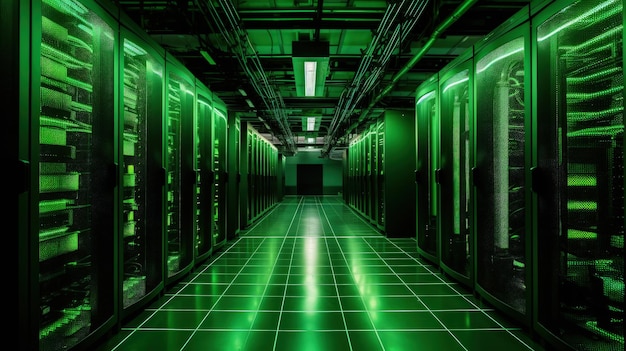
Several companies lead the way in creating sustainable infrastructure:
A. Google
-
Achieved a carbon-neutral footprint since 2007.
-
Operates with a global PUE average of 1.1.
-
Uses AI-powered cooling and buys more renewable energy than any other tech company.
B. Microsoft
-
Built underwater data centers to take advantage of ocean cooling.
-
Developing data centers powered entirely by green hydrogen.
-
Pledged to become carbon negative by 2030.
C. Amazon Web Services (AWS)
-
Operates more than 125 renewable energy projects globally.
-
Launched Graviton ARM processors that use up to 60% less energy.
-
Targeting net-zero carbon by 2040.
D. Facebook (Meta)
-
Open-sourced its Open Compute Project to help others build energy-efficient hardware.
-
Data centers achieve PUEs under 1.1.
-
Invested in cold storage systems for infrequently accessed data.
Strategies for Building Green Data Centers
For companies looking to develop energy-efficient data centers, the following strategies are crucial:
A. Location Selection
-
Choose cool climates to take advantage of free cooling.
-
Proximity to renewable energy sources is essential.
-
Consider seismic and climate risks for long-term sustainability.
B. Sustainable Architecture
-
Use green-certified building materials.
-
Implement thermal insulation and reflective roofing to reduce heat gain.
-
Design for natural airflow and efficient space utilization.
C. Intelligent Power Infrastructure
-
Deploy uninterruptible power supplies (UPS) with high-efficiency ratings.
-
Use smart grids and DC power distribution to reduce conversion losses.
-
Incorporate battery storage for peak shaving and renewable integration.
D. Water Conservation
-
Shift to air cooling or liquid immersion cooling to reduce water use.
-
Install closed-loop systems to recycle water.
-
Monitor water usage efficiency (WUE) alongside PUE.
The Economic Benefits of Energy-Efficient Data Centers
Sustainability isn’t just about saving the planet—it also makes financial sense:
A. Lower Operational Costs
-
Energy-efficient systems reduce electricity bills.
-
Renewable energy offers predictable, long-term pricing.
-
Cooling innovations lower HVAC expenses.
B. Incentives and Tax Benefits
-
Many governments offer grants, subsidies, and tax breaks for green initiatives.
-
Compliance with energy standards can avoid penalties and regulation issues.
C. Improved Brand Image
-
Consumers and investors favor eco-conscious companies.
-
Environmental certifications like LEED and ISO 50001 enhance reputation.
D. Long-Term ROI
-
While initial investments may be higher, the return on efficiency, scalability, and sustainability is substantial over time.
Challenges in Implementing Green Data Centers
Despite clear benefits, challenges remain:
A. High Upfront Investment
Green infrastructure, renewable energy systems, and high-efficiency hardware demand significant capital.
B. Technical Complexity
Engineering solutions like liquid cooling and AI-based monitoring require specialized expertise and maintenance.
C. Geographical Constraints
Not all locations have access to renewable power, free air cooling, or low land costs.
D. Legacy Systems
Older data centers may struggle to retrofit new efficiency technologies, resulting in gradual adoption.
The Future Outlook: Toward Net-Zero Data Infrastructure
The road ahead for sustainable computing includes several exciting developments:
A. Zero-Carbon Data Centers
Future facilities will operate on 100% clean energy, with zero emissions and zero waste.
B. Autonomous Energy Optimization
AI will not only manage servers but also optimize entire buildings, predicting demand and adjusting systems accordingly.
C. Circular IT Hardware Economy
Data centers will adopt reuse and recycling models, minimizing e-waste and extending equipment lifespan.
D. Integration with Smart Cities
As urban infrastructure evolves, data centers will become energy hubs—balancing loads, supporting electric vehicles, and collaborating with smart grids.
Conclusion: Building a Sustainable Digital Future
Energy-efficient data centers are no longer an option—they’re a necessity in a world increasingly reliant on digital services. As climate change accelerates, the demand for sustainable, intelligent, and cost-effective solutions grows louder.
By embracing innovations in cooling, AI, renewable power, hardware design, and modular architecture, organizations can future-proof their digital infrastructure while meeting environmental responsibilities.
The transformation is already underway, and those who invest early in green data infrastructure will not only reduce emissions but also gain competitive advantages in cost, performance, and public trust.
A cleaner, smarter, and more sustainable digital era is within reach—and it begins with the data centers powering our world.

